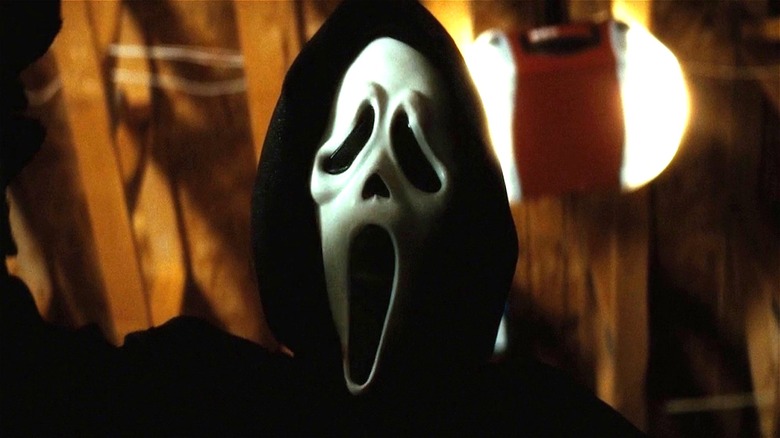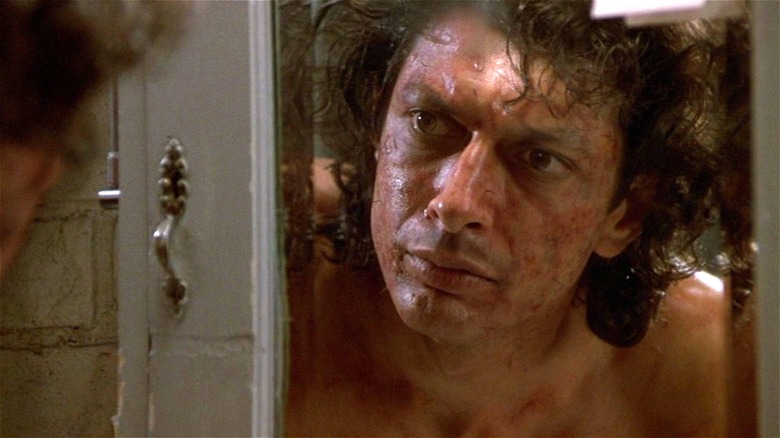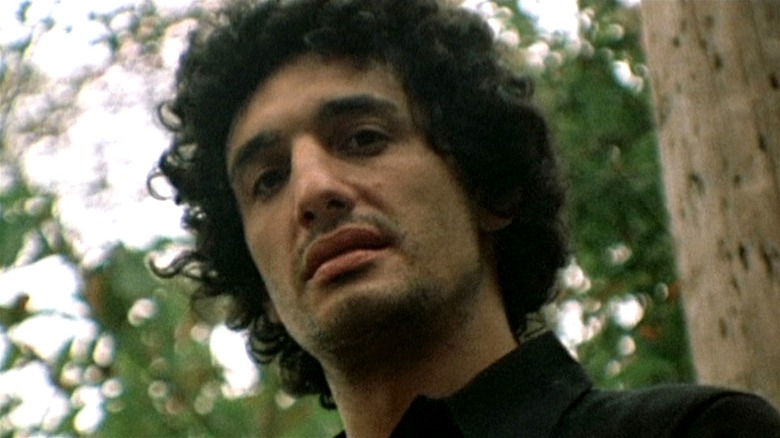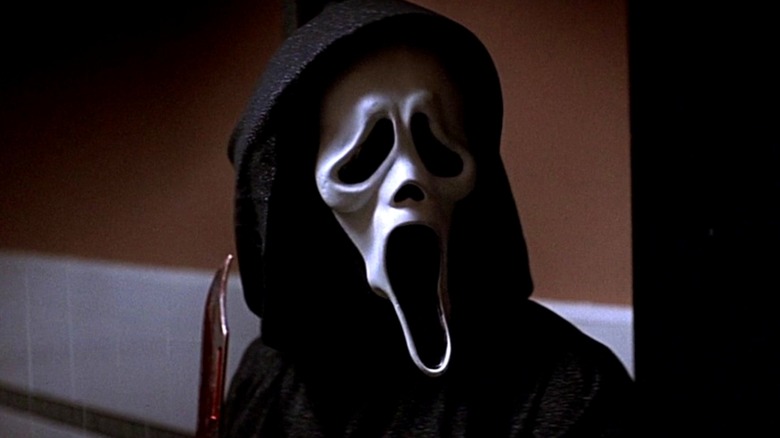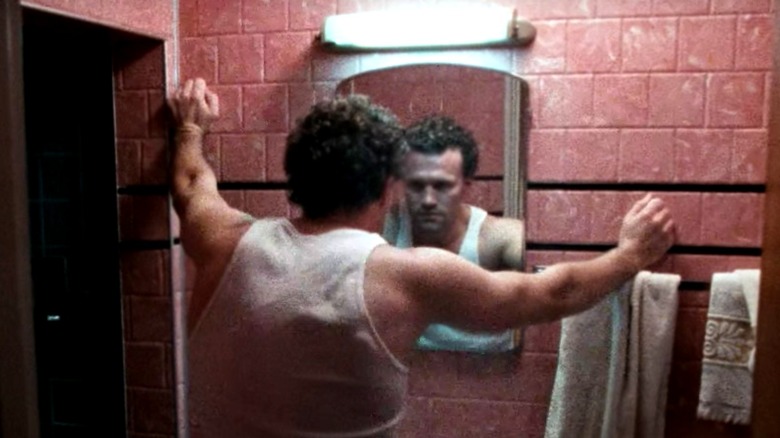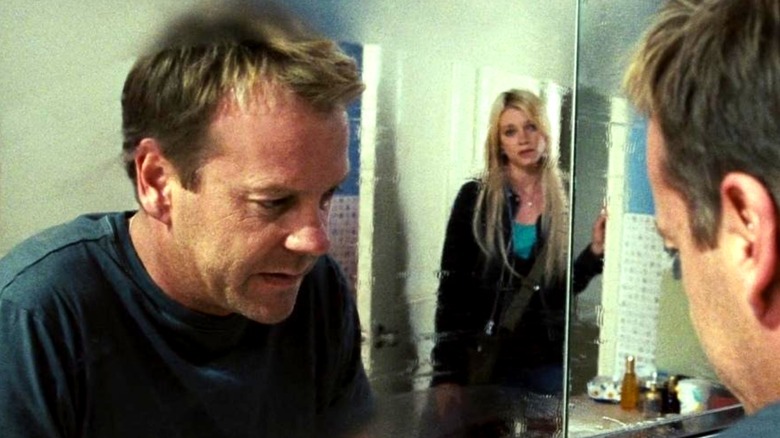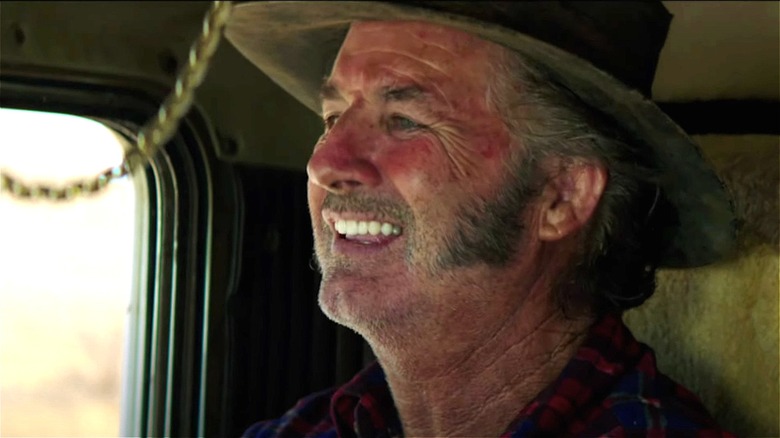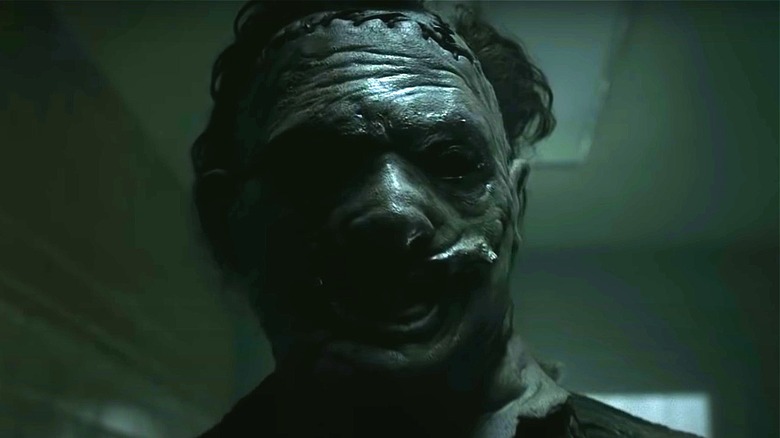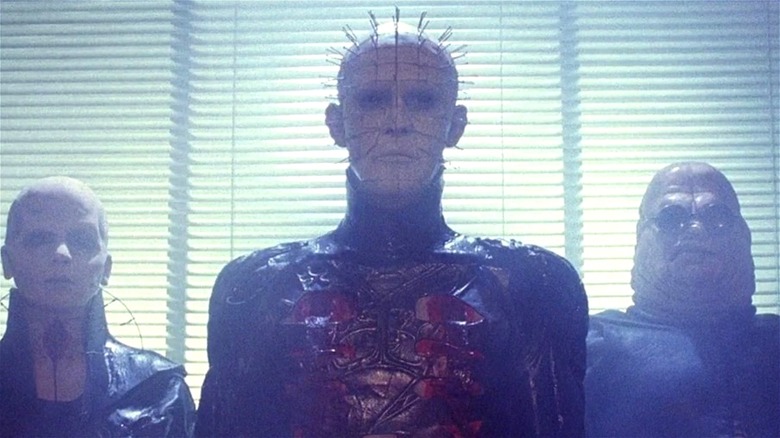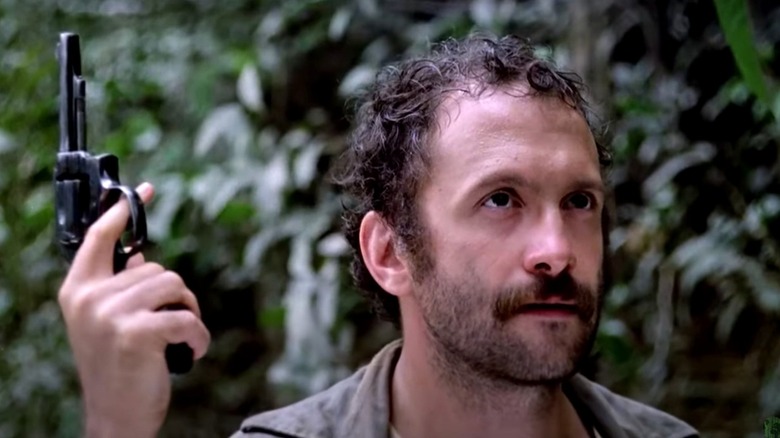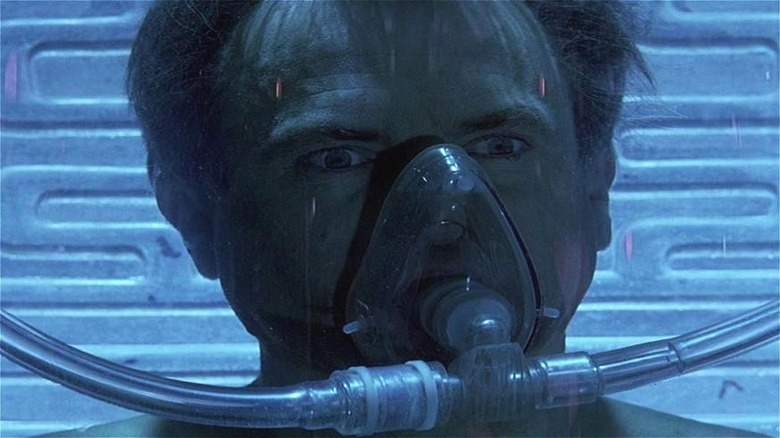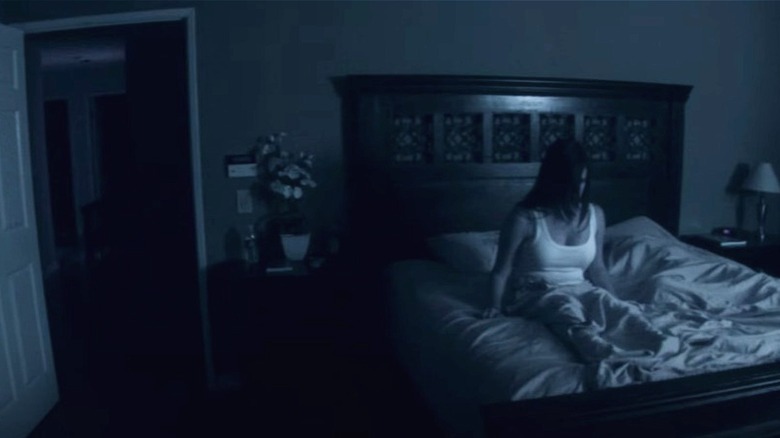R-Rated Horror Scenes That Didn't Make The Original Cut
You're unlikely to know if a sequence has been "edited for content" unless you have advanced knowledge or the censor was particularly shoddy. After all, the difference between PG-13 and R (or R and NC-17) is often a matter of seconds — a rude word, a flash of nudity, a spurt of blood.
Film regulators such as the Motion Picture Association (MPA, formerly MPAA) and the British Board of Film Classification (BBFC) may have checkered histories, but they have generally shifted from censors to classifiers, even if they still meddle occasionally with the right for adults to choose their own film and TV.
In recent years, distributors looking for family dollars are just as likely to compromise creativity and water down their filmmakers' content. Even filmmakers themselves axe their own sequences, although the reasons are often creative rather than commercial. Whether they faced censorship battles, disapproving test audiences, or creative reappraisal, here are R-rated horror scenes that didn't make the original cut.
The Fly
In "The Fly," eccentric scientist Seth Brundle (Jeff Goldblum) is applying the finishing touches to a pair of teleportation pods that dominate the open space of his industrial apartment. One evening, after an argument with his new girlfriend Ronnie (Geena Davis), a drunken Brundle teleports himself on a whim and emerges unscathed. However, Brundle didn't notice the housefly in the pod's window, and in the coming days and weeks, the scientist realizes that his DNA has been spliced with the insect's and that he will morph, progressively and hideously, into a mutant hybrid creature.
David Cronenberg's film is a powerful story about love and disease that reached a mainstream audience without compromising the director's grotesque "body horror" aesthetic. In fact, "The Fly” features some of Cronenberg's most grotesque imagery, from subtle rashes and abnormal body hair to exploding eyeballs and a ripped-off jaw. However, there was a scene that proved too much for test audiences even in this bloody milieu.
As seen on home video releases, the scene would have occurred about three-quarters of the way through the film, and depicted an increasingly deformed Brundle using the telepods to fuse a cat with a baboon, creating a monstrous entity that is one end feline, the other end primate. Disgusted by what he's done, Brundle struggles with the ferocious mutant before bludgeoning it to death with a metal pipe. There are two problems with this scene. First, it is a jarringly unsympathetic action, even if Brundle is losing his mind. Second, the animatronics are risible; the creature looks like a zoomorphic shag carpet.
The Last House on the Left
"To avoid fainting, keep repeating: It's only a movie, only a movie, only a movie...," read the tagline of "The Last House on the Left" upon its release in 1972. It was some great marketing hyperbole, but it also spoke to the film's horrible power.
Director Wes Craven intended to show the ugliness of violence, to contrast the bloodless fare of "bang bang" westerns with a story that was cruel and painfully real. The film's exploitation packaging was somewhat at odds with this earnest reasoning, but Craven and producer Sean S. Cunningham were largely successful, creating a grindingly unpleasant revenge story that remains visceral some 50 years later.
"The Last House on the Left" was so controversial on release that everyone was out to get it, even disgusted theater managers and projectionists, who are said to have made their own cuts. Such personal, ad-hoc interventions worked both ways. Distributor George Mansour remembered that when the MPA insisted on cutting scenes of chest carving, disembowelment, and more, he and the filmmakers simply put it all back anyway. The version audiences saw back in the early 1970s was a matter of chance and whim.
Scream
"The Last House on the Left" would not be Wes Craven's last contention with the MPA. In 1996, the filmmaker submitted "Scream," the horror satire that spawned a franchise and revitalized the genre. It's unlikely that either of those things would have happened, however, if Craven and Dimension Films had accepted the MPA's NC-17 rating.
In 1990, the NC-17 replaced the dreaded "X" certificate, which had long been dogged by pornographic overtones. However, this new and rather bland initialism did little to reduce the stigma owing to theater chains' refusal to show NC-17 certified films, condemning them to box office failure.
Craven submitted "Scream" nine times before he achieved the commercially acceptable R rating. "It's very, very expensive," the filmmaker explained (per Melon Farmers). "Your budget is disappearing [and] you're at the end of post production ... you're usually 'in mix', so all the editing is done, and now you're fighting this thing and they're asking for changes. It went on for weeks." And for what? Microscopic cuts were made to the blood and gore in six scenes of the film.
Henry: Portrait of a Serial Killer
"Henry: Portrait of a Serial Killer" premiered at the Chicago International Film Festival on September 24, 1986, almost two months after the sixth installment of the "Friday the 13th" series. Observers could have been forgiven for seeing it as just another slasher film, but "Henry" — a fictionalization of serial killers Henry Lee Lucas and Otis Toole — had little in common with "Friday the 13th" or any other schlocky franchise.
"Our chief device was removing fantasy," explained John McNaughton (per Melon Farmers), "because as long as you have the buffer of fantasy then you have a level of comfort and distance..." Well, there is certainly no comfort or distance in "Henry;" we see sexual assault, torture, and murder through a cold, realist aesthetic. One could argue that this is an appropriate manner of depiction unlike the frivolous exploitation of its slasher contemporaries, but the censors thought otherwise.
The BBFC cut 62 seconds from the theatrical release and a further 51 seconds for the video release, bringing the censorship to a total of 113 seconds. Four seconds were cut from a stabbing scene, 38 seconds from a bloody aftermath involving a bottle and a woman's face, and 71 seconds from a disturbing home invasion.
If you or anyone you know has been a victim of sexual assault, help is available. Visit the Rape, Abuse & Incest National Network website or contact RAINN's National Helpline at 1-800-656-HOPE (4673).
Mirrors
"High Tension" director Alexandre Aja had to cut 10 seconds of violence from his 2008 film "Mirrors" to secure an R rating from the MPA. Later, in Britain, the BBFC gave the film an "18" owing to its strong gory content. Twentieth Century Fox wanted a more commercial "15" rating, so they agreed to cuts in four instances.
The first cuts were made to a scene in which a security guard slits his own throat with a glass shard, causing blood to spray from the cringingly deep wound. Then there was the sight of a horrifically burned woman screaming in pain. Cuts also came to perhaps the film's goriest moment, which sees a woman's mouth torn apart in grotesque detail. Lastly, frames were removed from another throat-slashing scene around the 88th minute. These cuts pertained only to the theatrical release; both the MPA and the BBFC passed "Mirrors" uncut on home media.
Wolf Creek 2
Roger Ebert had a memorably strong reaction to the first "Wolf Creek" film back in 2005. "What the hell is the purpose of this sadistic celebration of pain and cruelty?" the Chicago Sun Times critic wrote. "If anyone you know says this is the one they want to see, my advice is: Don't know that person no more." A majority of critics struck a similar, winded tone, but that did not stop the advent of "Wolf Creek 2," which brings another 100+ minutes of Australian outback brutality.
The Australian Classification Board (ACB) gave "Wolf Creek 2" an R18+ rating, meaning that no one below the age of 18 could view it in theaters. They cited "episodic and realistic" violence that is replete with "copious, realistic blood and gore effects including decapitation and dismemberment" (via Melon Farmers).
Roadshow Films was not satisfied with this appraisal, but what did they expect? "Wolf Creek 2" revels in the destruction of human anatomy and the many ways in which it can be done. I think Australian horror fans would have felt hard done by if it received anything less than R18+. Well, according to screenwriter Aaron Sterns, the distributors were looking for an audience wider than just horror enthusiasts, so several cuts were made to a revolting headshot, a decapitation, a full body dismemberment, and bloody wounds to one character's face and another's fingers.
The Texas Chainsaw Massacre (2003)
The 2003 version of "The Texas Chainsaw Massacre" never got banned like its 1974 predecessor (the BBFC banned it until 1998), but the MPA did ask for two cuts to avoid an NC-17 rating. First was a gunshot suicide — director Marcus Nispel had to reduce the blood and remove the sight of a severed ear. Nispel said he was satisfied with this shot despite the cut, adding that the blood's dark color was scarier, "I never like blood that looks like syrup or ketchup" (via Melon Farmers).
However, the German filmmaker was less enthusiastic about the MPA's cuts to a scene in which Leatherface (Andrew Bryniarski) hangs his victim from a dusty old chandelier, pulls the cord of his chainsaw, and halves the man from the groin upwards, flooding the room with blood and lumpy viscera. The censors took their mop and bucket to it, removing all the mess and leaving Leatherface's terrible act to your imagination. "Two shots had to go out," Nispel remembered, "which really don't show you all that much ... it leaves me wondering what had really happened to him."
Hellraiser
Clive Barker's "Hellraiser" combined sex with violence in a way that troubled the MPA. Commenting on a sex scene between Julia (Clare Higgins) and Frank (Sean Cotton), Barker recalled that the MPA "allowed two consecutive buttock thrusts from Frank but a third would be deemed obscene" (via Melon Farmers). Cuts were made accordingly.
Cuts were then made to Julia's first hammer murder, reducing the number of strikes much like the number of buttock thrusts. Cut also were images of Kirsty's hand in Frank's open, bloody abdomen ("Hellraiser" is high fantasy gore, in case you haven't seen it), where Frank was played by Oliver Smith.
Barker's most regretful cut occurred during the finale, in which Frank (played here by Andrew Robinson) is torn apart by hooks and chains. The MPA took issue with how Frank licks his lips in an odd, masochistic way. "It was a much longer shot, body pieces went every place," Barker remembered. "In another life I would have let [that] run slightly longer [as] it looks slightly truncated."
Cannibal Holocaust
Mystery surrounds a bloody piranha attack scene in "Cannibal Holocaust," the notorious video nasty. The moment was said to depict tribesmen tying an enemy to a log and lowering him into a piranha infested river, stripping everything below the waterline to the bone. A still of this scene was used to market the film, but the full sequence was elusive to the point of rumor.
Revelation came in 2021, when Dread Central spoke to Calum Waddell, author of the non-fiction book "Cannibal Holocaust (Devil's Advocates)." Waddell quoted Colombian actor Ronaldo Blanca, who said, "I was there for that scene — he [the director] definitely shot it. He called 'Action!' and he called 'Cut!' and some of us had gathered around to watch it and we all applauded ... it was a brilliant effect."
Of course, the piranha scene is not the only moment lost or cut from "Cannibal Holocaust." The film was so shocking that Italian authorities arrested director Ruggero Deodato for the murder of his actors, an accusation he disproved by inviting the very much alive cast to court. "Cannibal Holocaust" was banned in 40 countries and remains prohibited or censored to this day, primarily because of its scenes of real animal slaughter.
Event Horizon
Gory cult favorite "Event Horizon" was almost even gorier. Paul W.S. Anderson's original cut ran over two hours long thanks in part to reels of bloody imagery that were so strong that some test audience members fainted. "I was enjoying the gruesomeness of it so much that I probably put way too much of it in there," Anderson admitted on the DVD commentary.
Effects supervisor Dave Bonneywell expanded on this claim. Namely, he said that Anderson's early cut gave a more detailed account of the "Event Horizon" massacre, showing the mutilation of teeth, legs and breasts in a pornographically violent sequence of events.
"You can't underestimate the shock this movie had," Anderson added on the commentary track. "The level of unpleasantness ... the really hardcore version we had originally ... If we'd had more time to work on it, we could have kept a lot of the more gruesome aspects." Ultimately, the "Event Horizon" that reached theaters was a much shorter 96-minute version that passed the MPA without incident.
Paranormal Activity
"Paranormal Activity" ends with a demon-possessed Katie (Katie Featherston) hurling her partner Micah (Micah Sloat) at the camera, but this wasn't the only option. In fact, director Oren Peli weighed up three other endings — two of them brutal. In the least violent one, a neighbor calls the cops, who arrive at the house and corner the possessed Katie. Their presence appears to sober her, but a sudden door slam startles a cop, who shoots her dead.
The other two endings are more unsettling. Technical concerns stopped Peli from filming a scene in which Katie takes the camera and bludgeons Micah to death with it POV style. It's hard to know whether audiences would have laughed or screamed at such a moment. However, Peli fully understood the intense reaction to the ending in which Katie kills Micah downstairs and enters the bedroom and slits her throat before the camera. Peli chose the infamous "throw" ending based in part on producer Steven Spielberg's suggestion.
